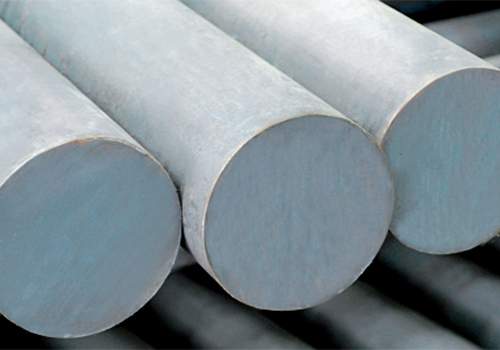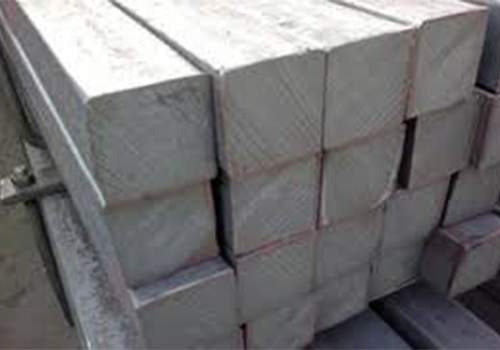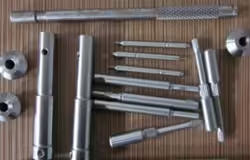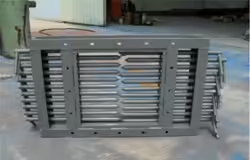
Why Q235 Steel Hardness Matters in Manufacturing
Table of Contents
Introduction

In the world of manufacturing, the selection of materials plays a significant role in determining the quality, durability, and performance of the final product. One of the most commonly used steels in manufacturing is Q235 steel, a carbon structural steel known for its versatility, cost-effectiveness, and suitability for a wide range of applications. However, one of the most important aspects of Q235 steel is its hardness, which directly influences its performance in various manufacturing processes.
Hardness refers to a material’s ability to resist deformation, indentation, or scratching. It is a critical property when it comes to the use of steel in manufacturing, as it affects the material’s wear resistance, strength, and ability to withstand heavy loads. This blog explores why Q235 steel hardness is important in manufacturing and how it impacts the material’s performance across various industries.
Henan Jiyuan Iron and Steel (Group) Co., Ltd. was founded in 1958. It has rich experience in production and research and development. It provides you with one-stop steel services and welcomes consultations from customers around the world.
What is Q235 Steel?
Q235 steel is a type of carbon steel that is widely used in the manufacturing of structural components, machinery, and equipment. It is recognized for its relatively low carbon content (between 0.12% and 0.20%) and is classified as a mild steel due to its moderate strength. The steel’s designation, “Q235,” refers to its yield strength of 235 MPa.
Q235 steel is commonly used in industries such as construction, transportation, and manufacturing for applications such as:
- Building frameworks
- Bridges
- Structural components
- Industrial machinery
Although Q235 steel is versatile, its hardness plays a critical role in determining its effectiveness for specific applications.
Understanding Q235 Steel Hardness
Hardness in steel is typically measured using various scales, such as Brinell, Rockwell, or Vickers. The hardness of Q235 steel is influenced by several factors, including its chemical composition, manufacturing process, and heat treatment.
Factors affecting Q235 steel hardness include:
- Carbon Content: The higher the carbon content, the harder the steel. Since Q235 steel has a relatively low carbon content, it is considered softer compared to higher-carbon steels.
- Heat Treatment: Heat treatments, such as quenching and tempering, can be used to increase the hardness of Q235 steel. These processes modify the steel’s microstructure, improving its wear resistance and strength.
- Alloying Elements: The addition of alloying elements such as manganese, silicon, and chromium can influence the hardness and other mechanical properties of Q235 steel.
Why Q235 Steel Hardness Matters in Manufacturing


Wear Resistance and Durability
One of the primary reasons why Q235 steel hardness matters is its impact on wear resistance. Manufacturing environments often involve heavy machinery, friction, and abrasion. Steel with adequate hardness will withstand these forces and remain durable over time. For example, when used in applications like structural components, Q235 steel with the right hardness will have a longer lifespan, as it resists wear from constant use.
Improved Load-Bearing Capacity
Hardness plays a significant role in the load-bearing capacity of steel. When Q235 steel is properly hardened, it can bear heavier loads without experiencing significant deformation. This is particularly important in the construction of load-bearing structures, where the material needs to support heavy weights over an extended period.
Corrosion Resistance
While Q235 steel is not inherently corrosion-resistant, its hardness can indirectly affect its ability to resist corrosion. Harder steel surfaces tend to have fewer microscopic defects that can attract rust or corrosion. This is particularly true in environments where steel is exposed to moisture, chemicals, or other corrosive elements.
Molding and Machining Efficiency
Manufacturing processes such as molding, cutting, and machining rely on the hardness of the material being processed. Q235 steel with the right hardness will be easier to cut, shape, and form without compromising the integrity of the material. Conversely, steel that is too soft may be challenging to process, while steel that is too hard may cause excessive wear on tools and machinery.
Structural Integrity
The hardness of Q235 steel contributes to its structural integrity. Harder steel is less likely to bend or deform under stress, making it ideal for applications where strength and stability are critical. For instance, in the construction of bridges or building frames, Q235 steel with optimal hardness ensures that the structure remains intact even under high stress.
Table: Q235 Steel Hardness and Its Applications
| Property | Details |
|---|---|
| Hardness Range | Typically between 120-160 HB (Brinell Hardness) |
| Applications | Structural components, bridges, machinery parts |
| Processing Methods | Cold-rolled, hot-rolled, heat-treated |
| Yield Strength | 235 MPa |
| Impact on Manufacturing | Increased wear resistance, better machining efficiency, improved load-bearing capacity |
| Corrosion Resistance | Moderate, but improves with higher hardness |
How to Achieve the Desired Hardness in Q235 Steel
Achieving the desired hardness in Q235 steel requires controlling several factors during the manufacturing process. Some of the methods to increase hardness include:
- Heat Treatment: Heat treatments such as quenching and tempering are commonly used to increase the hardness of Q235 steel. Quenching involves heating the steel to a high temperature and then rapidly cooling it, which increases its hardness.
- Cold Working: Cold working involves deforming the steel at room temperature, which increases its hardness by introducing dislocations in the metal structure.
- Alloying: Adding alloying elements, such as chromium or nickel, can help improve the hardness and other mechanical properties of Q235 steel.
Applications of Q235 Steel with Optimal Hardness

Q235 steel is used across a wide variety of applications. Some of the key sectors that benefit from its hardness include:
- Construction: Used for structural components such as beams, columns, and frames. The hardness ensures the steel can withstand the heavy loads and stresses in building construction.
- Transportation: Employed in the manufacturing of car frames, truck chassis, and trailers. The optimal hardness helps ensure the durability and safety of vehicles.
- Industrial Machinery: Utilized for parts and components like shafts, gears, and brackets. The right hardness improves the wear resistance of these critical machine components.
- Infrastructure: In applications such as bridges, railways, and power plants, Q235 steel provides the necessary strength and durability required for these long-lasting structures.
Conclusion
The hardness of Q235 steel plays a critical role in its performance in manufacturing. Whether it’s providing wear resistance, improving load-bearing capacity, or ensuring durability, understanding the importance of steel hardness is essential for manufacturers. By optimizing the hardness through heat treatments, alloying, and other methods, manufacturers can enhance the material’s performance and ensure it meets the specific requirements of each application.
Selecting the appropriate hardness for Q235 steel will depend on the intended application, the environment, and the required mechanical properties. By taking these factors into account, manufacturers can ensure they are using the best material for their project.
FAQ
What is the hardness range of Q235 steel?
Q235 steel typically has a hardness range between 120-160 HB, depending on its processing and treatment.
How does hardness affect Q235 steel’s wear resistance?
Hardness directly influences the wear resistance of Q235 steel. Harder steel is more resistant to abrasion and wear, which is important for heavy-duty applications.
Can Q235 steel be heat-treated to increase hardness?
Yes, heat treatment processes like quenching and tempering are commonly used to increase the hardness of Q235 steel.
What are the main applications of Q235 steel with optimal hardness?
Q235 steel with optimal hardness is used in construction, transportation, industrial machinery, and infrastructure projects.
How does hardness impact the machinability of Q235 steel?
The hardness of Q235 steel affects its machinability. Steel that is too hard can be difficult to machine, while steel that is too soft may be prone to damage during processing.
What are the typical methods for increasing the hardness of Q235 steel?
The typical methods for increasing Q235 steel hardness include heat treatment, cold working, and alloying.






